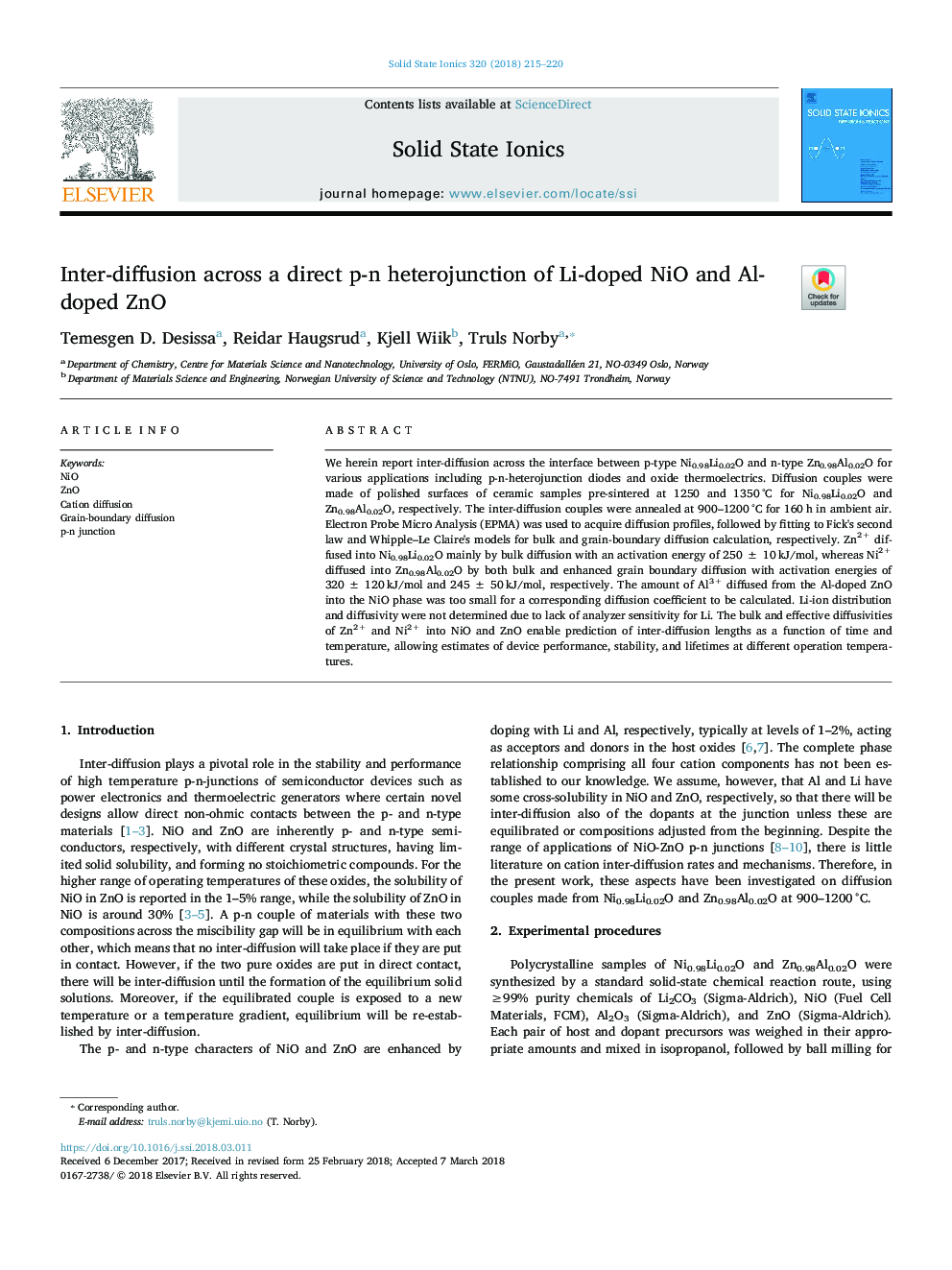| Article ID | Journal | Published Year | Pages | File Type |
|---|---|---|---|---|
| 7744444 | Solid State Ionics | 2018 | 6 Pages |
Abstract
We herein report inter-diffusion across the interface between p-type Ni0.98Li0.02O and n-type Zn0.98Al0.02O for various applications including p-n-heterojunction diodes and oxide thermoelectrics. Diffusion couples were made of polished surfaces of ceramic samples pre-sintered at 1250 and 1350â¯Â°C for Ni0.98Li0.02O and Zn0.98Al0.02O, respectively. The inter-diffusion couples were annealed at 900-1200â¯Â°C for 160â¯h in ambient air. Electron Probe Micro Analysis (EPMA) was used to acquire diffusion profiles, followed by fitting to Fick's second law and Whipple-Le Claire's models for bulk and grain-boundary diffusion calculation, respectively. Zn2+ diffused into Ni0.98Li0.02O mainly by bulk diffusion with an activation energy of 250â¯Â±â¯10â¯kJ/mol, whereas Ni2+ diffused into Zn0.98Al0.02O by both bulk and enhanced grain boundary diffusion with activation energies of 320â¯Â±â¯120â¯kJ/mol and 245â¯Â±â¯50â¯kJ/mol, respectively. The amount of Al3+ diffused from the Al-doped ZnO into the NiO phase was too small for a corresponding diffusion coefficient to be calculated. Li-ion distribution and diffusivity were not determined due to lack of analyzer sensitivity for Li. The bulk and effective diffusivities of Zn2+ and Ni2+ into NiO and ZnO enable prediction of inter-diffusion lengths as a function of time and temperature, allowing estimates of device performance, stability, and lifetimes at different operation temperatures.
Related Topics
Physical Sciences and Engineering
Chemistry
Electrochemistry
Authors
Temesgen D. Desissa, Reidar Haugsrud, Kjell Wiik, Truls Norby,
